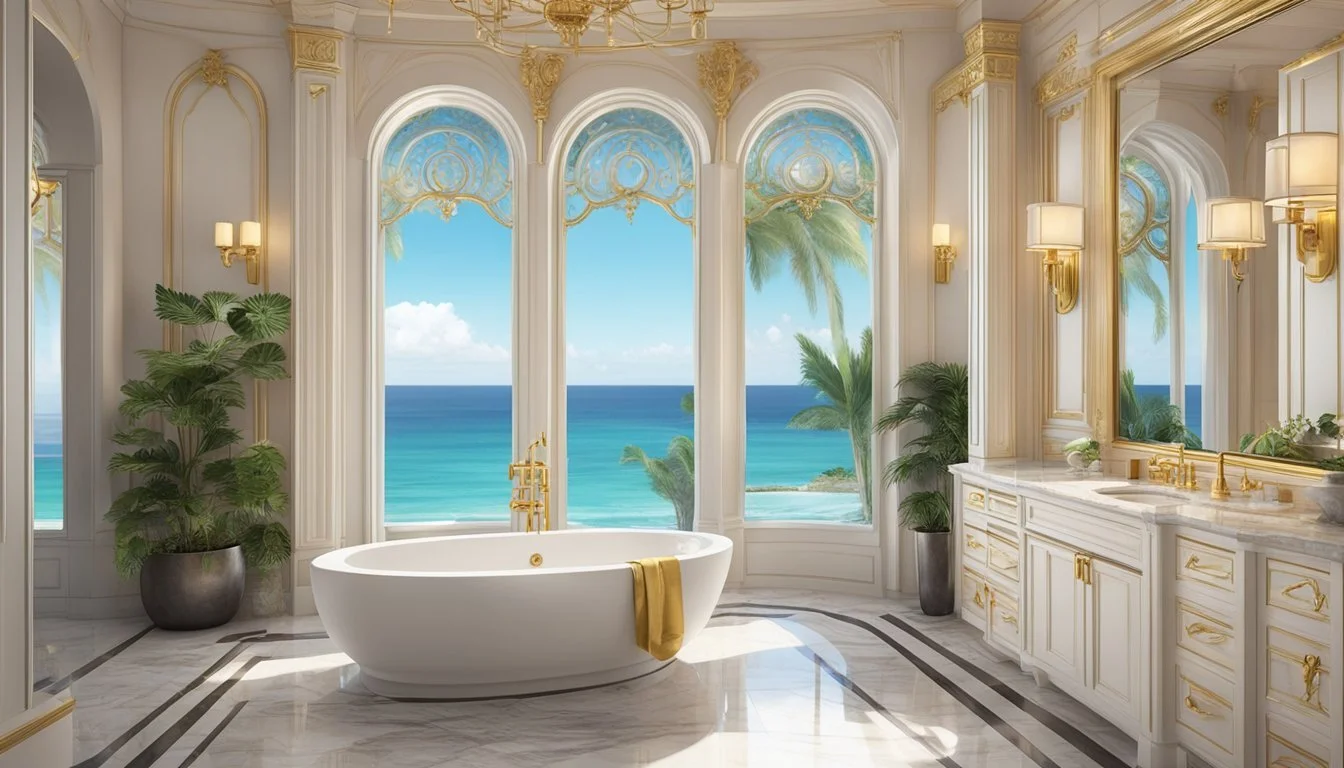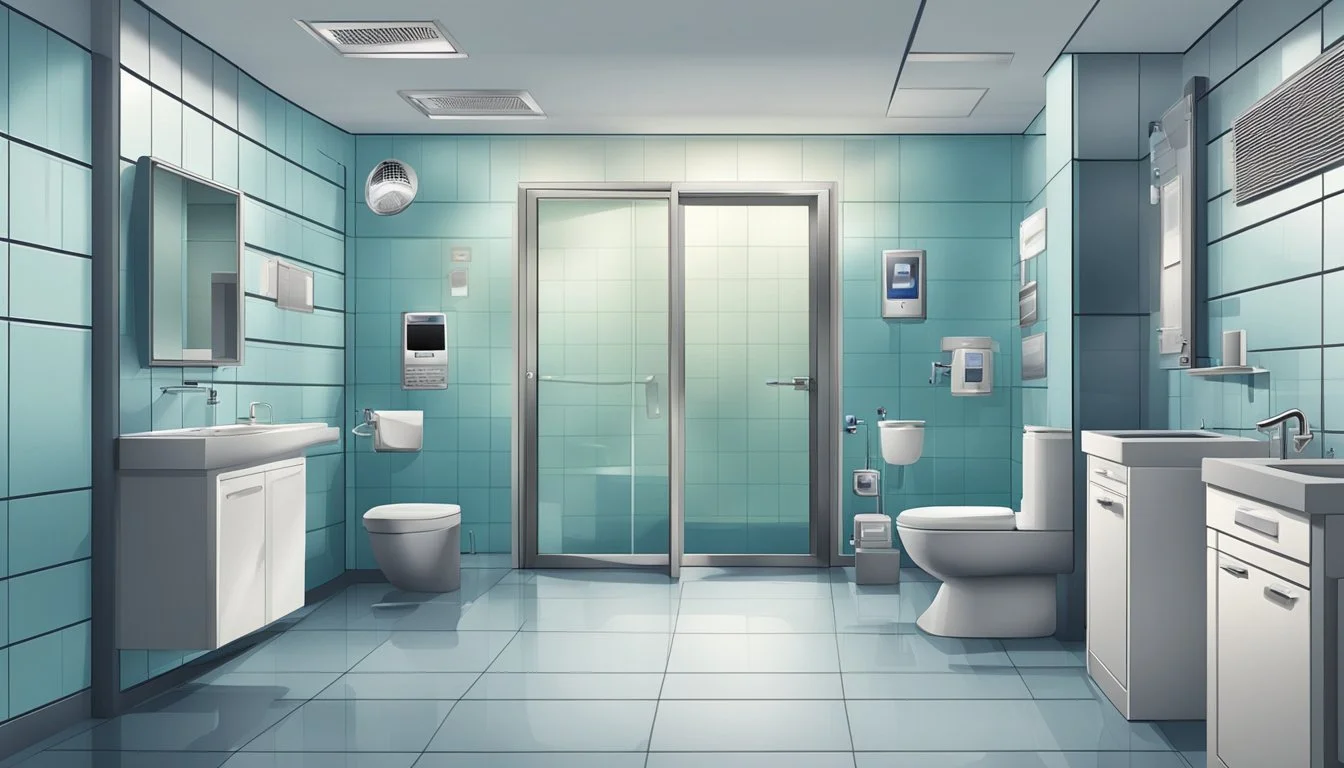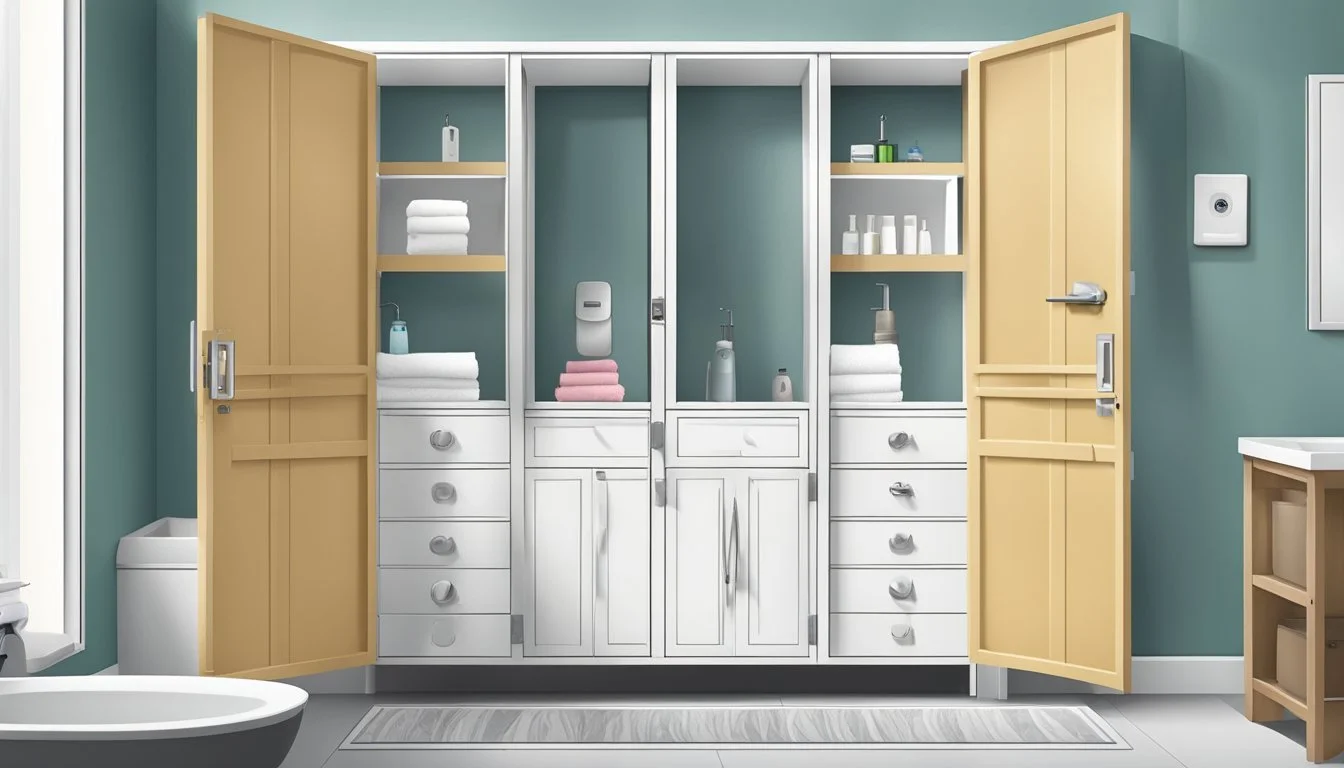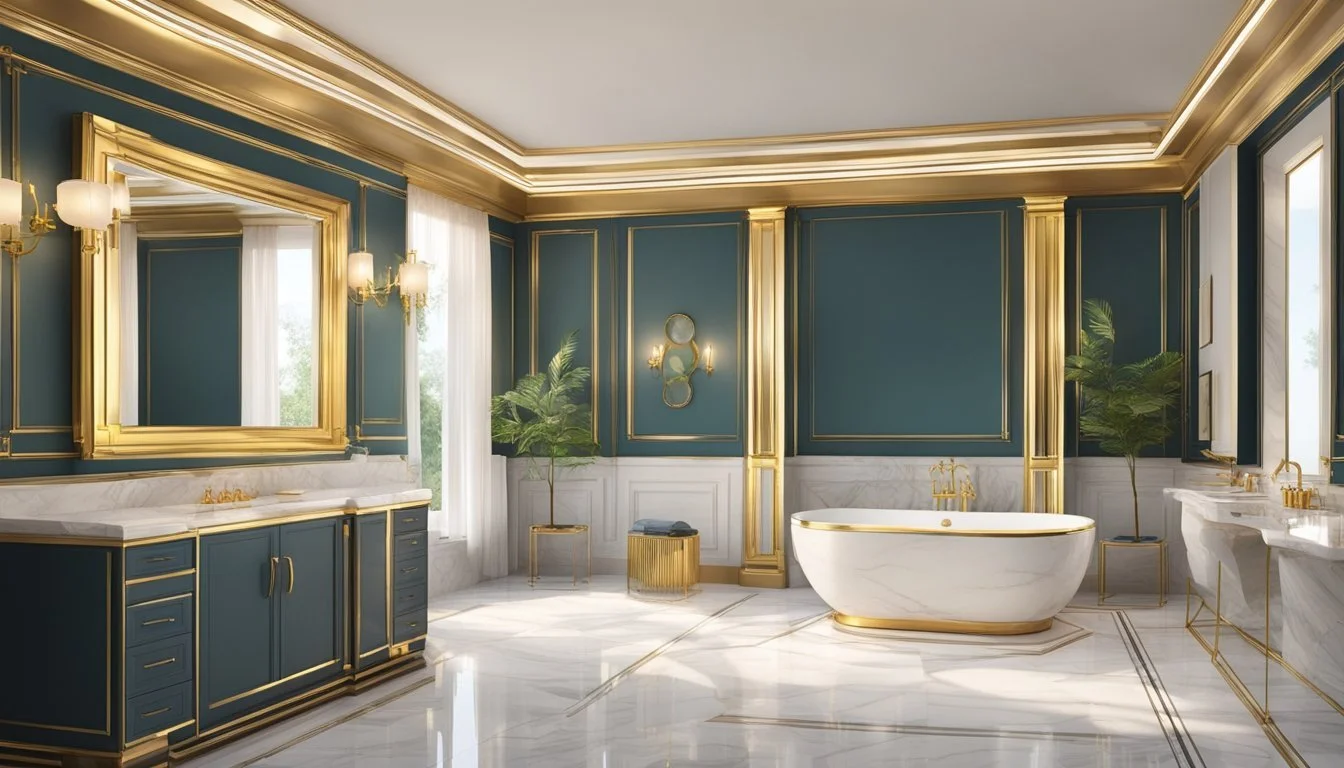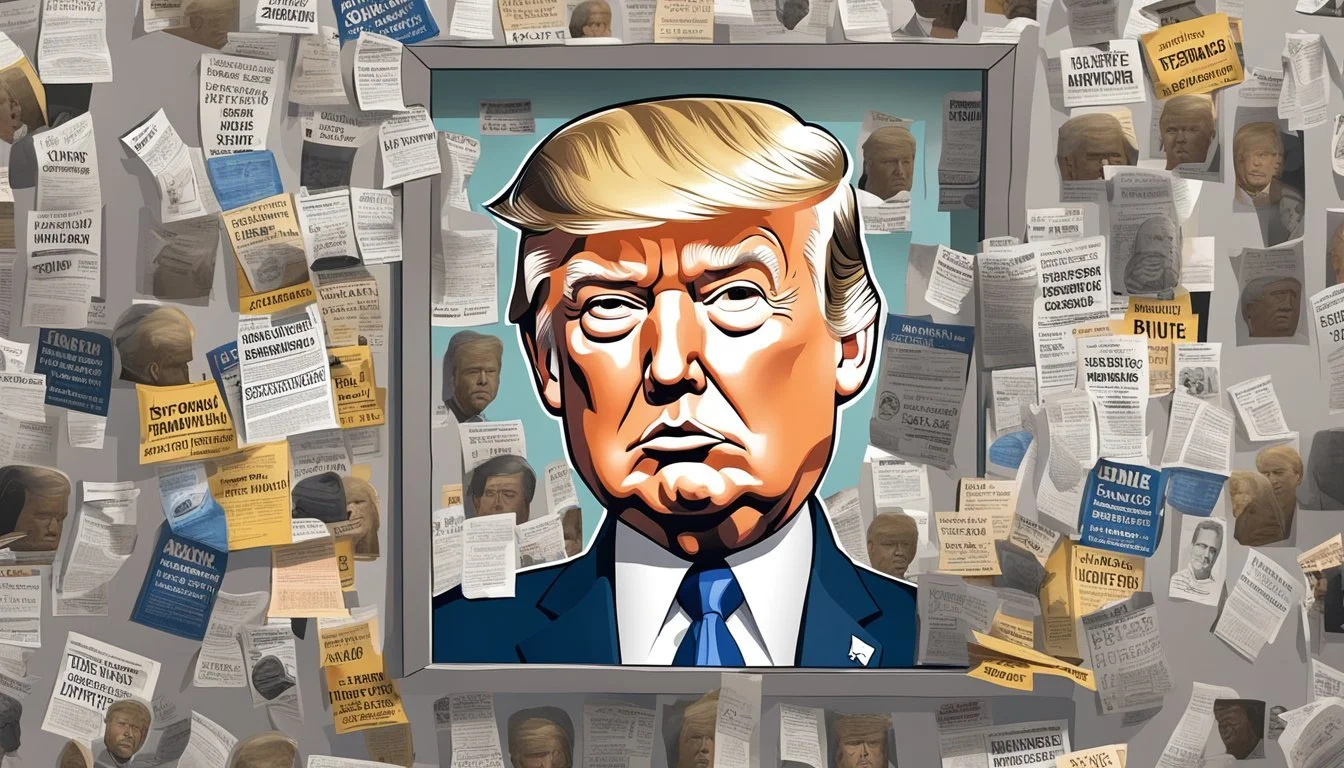White House Bathroom Upgrade Stirs Controversy
Donald Trump's bathroom at Mar-a-Lago became an unexpected focal point of a federal investigation. Photographs released as part of an indictment showed classified documents stored in unconventional locations throughout the Florida estate, including a bathroom and shower area.
The images revealed boxes of sensitive materials stacked in the Lake Room's bathroom, raising serious questions about document handling and security protocols. This revelation sparked widespread discussion about the proper storage and protection of classified information.
The bathroom storage controversy added another layer to the ongoing legal challenges faced by the former president. It highlighted concerns about potential national security risks and prompted debates on the responsibilities of those entrusted with highly sensitive government documents.
Mar-a-Lago Overview
Mar-a-Lago is a lavish estate in Palm Beach, Florida that serves as both a private club and residence. The property gained significant attention during Donald Trump's presidency and has been at the center of recent legal controversies.
Historic Significance
Mar-a-Lago was built in the 1920s by cereal heiress Marjorie Merriweather Post. The estate's name means "Sea-to-Lake" in Spanish, referring to its location between the Atlantic Ocean and Lake Worth Lagoon.
In 1985, Donald Trump purchased the property and transformed it into a private club. The estate was designated a National Historic Landmark in 1980 due to its architectural and cultural importance.
Mar-a-Lago's Mediterranean Revival architecture features ornate designs and luxurious materials. The main house boasts 126 rooms, including the opulent White and Gold Ballroom.
Membership and Activities
Mar-a-Lago operates as an exclusive private club with a limited membership. The club offers various amenities to its members and guests, including dining facilities, beach access, and recreational activities.
The property hosts social events, charity galas, and political fundraisers throughout the year. During Trump's presidency, Mar-a-Lago was often referred to as the "Winter White House" due to his frequent visits.
Membership fees are reportedly high, with initiation costs in the six-figure range. The club attracts wealthy individuals, business leaders, and political figures.
Property Layout
Mar-a-Lago spans 20 acres, with the main house as its centerpiece. The estate includes guest suites, a spa, tennis courts, and a beach club.
The property features lush gardens, fountains, and statues throughout its grounds. A grand driveway leads to the main entrance, lined with palm trees and manicured lawns.
Recent legal documents revealed that various rooms within Mar-a-Lago, including bathrooms and storage areas, were used to store boxes containing sensitive materials. This layout became a point of interest in ongoing investigations related to the handling of classified documents.
Donald Trump's Tenure
Donald Trump's presidency was marked by unconventional use of office space, controversial public statements, and active communication on social media platforms. His approach to politics and governance often defied traditional norms.
Office Space Usage
Trump's use of office space during his tenure raised eyebrows. He frequently conducted business at his Mar-a-Lago resort in Florida, dubbing it the "Winter White House." The resort's ballroom and bathroom were reportedly used to store sensitive documents.
Trump's handling of classified materials became a subject of scrutiny. Images released as part of a legal indictment showed boxes stacked in various rooms at Mar-a-Lago, including bathrooms and a ballroom stage.
This unorthodox storage of government documents in non-secure locations sparked controversy and legal challenges after his presidency ended.
Public Statements
Trump's public statements often generated intense media coverage and debate. He was known for making bold claims about his abilities and achievements. In one instance, he declared he would be "the greatest president God ever created."
His rhetoric frequently targeted cities and states within the U.S., describing some as "cesspools" and "hellholes" while praising others as "beautiful places." This approach was unusual for a presidential candidate and sitting president.
Trump's statements sometimes required fact-checking. For example, his claims about healthcare coverage were scrutinized, as the number of uninsured Americans rose during his tenure.
Truth Social Communications
After leaving office, Trump launched Truth Social, his own social media platform. He used it to communicate directly with supporters, bypassing traditional media channels.
On Truth Social, Trump continued his characteristic style of communication, making bold statements and criticizing political opponents. The platform became a key outlet for his post-presidency messaging.
Trump's use of Truth Social reflected his ongoing influence in Republican politics and his desire to maintain a direct line of communication with his base.
National Security Concerns
The storage of classified documents at Mar-a-Lago raised serious questions about potential risks to U.S. national security. Concerns centered on improper handling of sensitive materials and possible exposure of intelligence sources and methods.
Classified Documents Handling
Classified documents found at Mar-a-Lago contained highly sensitive information on U.S. and foreign military capabilities. Some papers related to nuclear programs and weapons systems. Storing these in unsecured locations like a bathroom posed major security risks.
Proper protocols for handling classified materials were not followed. Documents were kept in boxes stacked in various rooms, including a bathroom and ballroom. This increased the chance of unauthorized access or accidental disclosure.
The CIA and other intelligence agencies rely on strict document controls to protect sources and methods. Lax security at a private club threatened to compromise these safeguards.
Intelligence Alliance Implications
Mishandling of classified documents risked damaging relationships with key U.S. intelligence partners. The Five Eyes alliance shares sensitive information between the U.S., UK, Canada, Australia and New Zealand.
Exposure of shared intelligence could erode trust within the alliance. Partners may become hesitant to share critical data if they doubt U.S. ability to protect it.
Some documents reportedly contained information on foreign nuclear capabilities. Leaks of such data could strain diplomatic ties and hinder future intelligence gathering efforts.
Preserving these alliances is vital for U.S. national security. Close cooperation allows for more comprehensive global threat monitoring and analysis.
Legal and Investigative Proceedings
Donald Trump faces multiple legal challenges related to classified documents found at his Mar-a-Lago estate. These proceedings have unfolded through FBI searches, indictments, and ongoing investigations.
Initial FBI Search
The FBI executed a search warrant at Mar-a-Lago on August 8, 2022. Agents discovered over 100 classified documents in various locations, including a bathroom and shower in the Lake Room. This unprecedented action against a former president sparked intense public debate.
The search followed months of negotiations between Trump's team and the National Archives. Prior attempts to retrieve all classified materials had been unsuccessful.
Subsequent Indictments
On June 8, 2023, a federal grand jury indicted Trump on 37 criminal counts. The charges included willful retention of national defense information, conspiracy to obstruct justice, and false statements.
Special Counsel Jack Smith led the investigation. The indictment alleged Trump stored classified documents in unsecured areas, including a bathroom and ballroom stage. It also claimed he showed sensitive materials to unauthorized individuals.
Ongoing Investigations
The Department of Justice continues to probe Trump's handling of classified information. Investigators are examining potential obstruction of justice and violations of the Espionage Act.
A grand jury has heard testimony from numerous witnesses, including former Trump aides. Subpoenas have been issued for additional documents and testimony.
The case raises complex legal questions about presidential authority and the handling of classified information. It remains a focal point of national attention as proceedings unfold.
Storage and Security
Donald Trump's handling of classified documents at Mar-a-Lago raised serious concerns about storage practices and security protocols. Multiple locations throughout the property were used to keep sensitive materials, often in an insecure manner.
Secure Locations
Classified documents require stringent storage protocols to prevent unauthorized access. Proper secure locations typically include reinforced rooms with controlled entry, surveillance systems, and specialized locking mechanisms.
The U.S. government mandates strict guidelines for handling classified information. These include using approved safes, vaults, or secure rooms known as Sensitive Compartmented Information Facilities (SCIFs).
At Mar-a-Lago, classified materials were found in various unsuitable areas, including a ballroom, bedroom, office space, and even a bathroom. This storage approach deviated significantly from standard security practices for sensitive government documents.
The Mar-a-Lago Storage Room
A ground floor storage room at Mar-a-Lago became a focal point in the investigation of Trump's document handling. This room did not meet security standards for housing classified materials.
The storage area lacked adequate protections against unauthorized entry. It was accessible to staff and visitors, posing risks of exposure or tampering.
Security cameras near the storage room were eventually installed at the Justice Department's request. This belated measure highlighted the initial lack of proper monitoring for areas containing sensitive documents.
Access Control
Access control to classified documents at Mar-a-Lago was inadequate. Walt Nauta, Trump's aide, moved boxes containing sensitive materials between locations without proper authorization or security clearance.
Staff members without appropriate clearances had potential access to rooms where classified documents were kept. This violated fundamental principles of information security and need-to-know access.
The National Archives, responsible for managing presidential records, faced challenges in retrieving documents from Mar-a-Lago. This situation underscored the lack of a structured system for tracking and controlling access to sensitive materials at the property.
Physical Spaces of Interest
Donald Trump's Mar-a-Lago estate became a focal point for storing classified documents. Several key areas within the property were identified as locations where boxes containing sensitive materials were kept.
Bedroom and Personal Spaces
Trump's bedroom at Mar-a-Lago served as a storage area for classified documents. Boxes were found in this private space, raising questions about security protocols. The presence of sensitive materials in such a personal area highlighted concerns over proper handling and safekeeping.
Trump's office space at the estate also housed boxes of documents. This workspace, likely used for various activities, became another location where classified information was stored.
Bathroom Information
A bathroom at Mar-a-Lago was identified as one of the more unusual storage locations for classified documents. Boxes were discovered in this space, including the shower area.
The choice to keep sensitive materials in a bathroom sparked discussions about the appropriateness and security risks associated with such placement. This unconventional storage method became a notable point in the investigation.
Ballroom Significance
The Mar-a-Lago ballroom, typically used for events and gatherings, also contained boxes of classified documents. This large, public space contrasted sharply with the more private areas where other documents were found.
The presence of sensitive materials in such an open and potentially accessible area raised additional security concerns. The ballroom's dual role as both an event space and document storage location became a key focus of the investigation.
International Implications
Donald Trump's alleged mishandling of classified documents in his bathroom raised serious concerns globally. Foreign intelligence agencies and military operations faced potential risks due to the compromised security of sensitive information.
Foreign Intelligence Concerns
The Five Eyes intelligence alliance - comprising the United States, United Kingdom, Canada, Australia, and New Zealand - was particularly alarmed by the situation. These nations share critical intelligence data, and any breach could jeopardize their joint operations and national security.
The possibility of unauthorized access to classified materials stored improperly at Mar-a-Lago worried international partners. Intelligence agencies worldwide reassessed their information-sharing protocols with the U.S. to mitigate potential risks.
Foreign adversaries may have attempted to exploit this vulnerability, seeking opportunities to gather sensitive information. This incident likely prompted increased scrutiny of U.S. information security practices by both allies and rivals.
Military Operations
The alleged presence of National Defense Information in unsecured locations posed significant risks to ongoing and future military operations. Classified documents often contain details about troop movements, strategic plans, and advanced technologies.
If compromised, this information could endanger:
Active military personnel
Covert operations
Diplomatic negotiations
Weapons systems development
Military leaders worldwide likely reviewed their collaboration with U.S. forces, potentially adjusting joint exercise plans and intelligence-sharing agreements. The incident may have influenced strategic decisions by both allies and adversaries, impacting global military dynamics.
The U.S. Justice Department's investigation into this matter aimed to assess and mitigate potential damage to national security and international military cooperation.
Media and Public Perception
Donald Trump's presidency significantly impacted media coverage and public discourse. His unconventional approach to communication and governance shaped how news organizations reported on his administration and influenced public opinion.
Press Coverage
The Washington Post and other major news outlets provided extensive coverage of Trump's presidency. His frequent use of social media, particularly Twitter, forced journalists to adapt their reporting methods. Media organizations faced challenges in fact-checking and contextualizing Trump's statements in real-time.
Trump's relationship with the press was often contentious. He frequently criticized news outlets, labeling unfavorable coverage as "fake news." This approach led to increased scrutiny of media practices and discussions about journalistic ethics.
Some news organizations were accused of sensationalizing Trump's actions for ratings. Critics argued that wall-to-wall coverage of his tweets and statements gave him outsized influence over the news cycle.
Public Discussion
Trump's presidency polarized public opinion and dominated conversations across the country, from Miami to Seattle. His supporters praised his direct communication style and perceived authenticity.
Critics expressed concerns about the impact of his rhetoric on public discourse. Debates about truth, facts, and the role of media in democracy became more prominent during his tenure.
Social media platforms played a crucial role in shaping public perception. Trump's posts often sparked heated online discussions and real-world reactions. This digital-first approach to presidential communication changed how many Americans engaged with politics.
Public trust in traditional media sources fluctuated during Trump's presidency. Some voters became more skeptical of news reports, while others sought out fact-checking resources.


